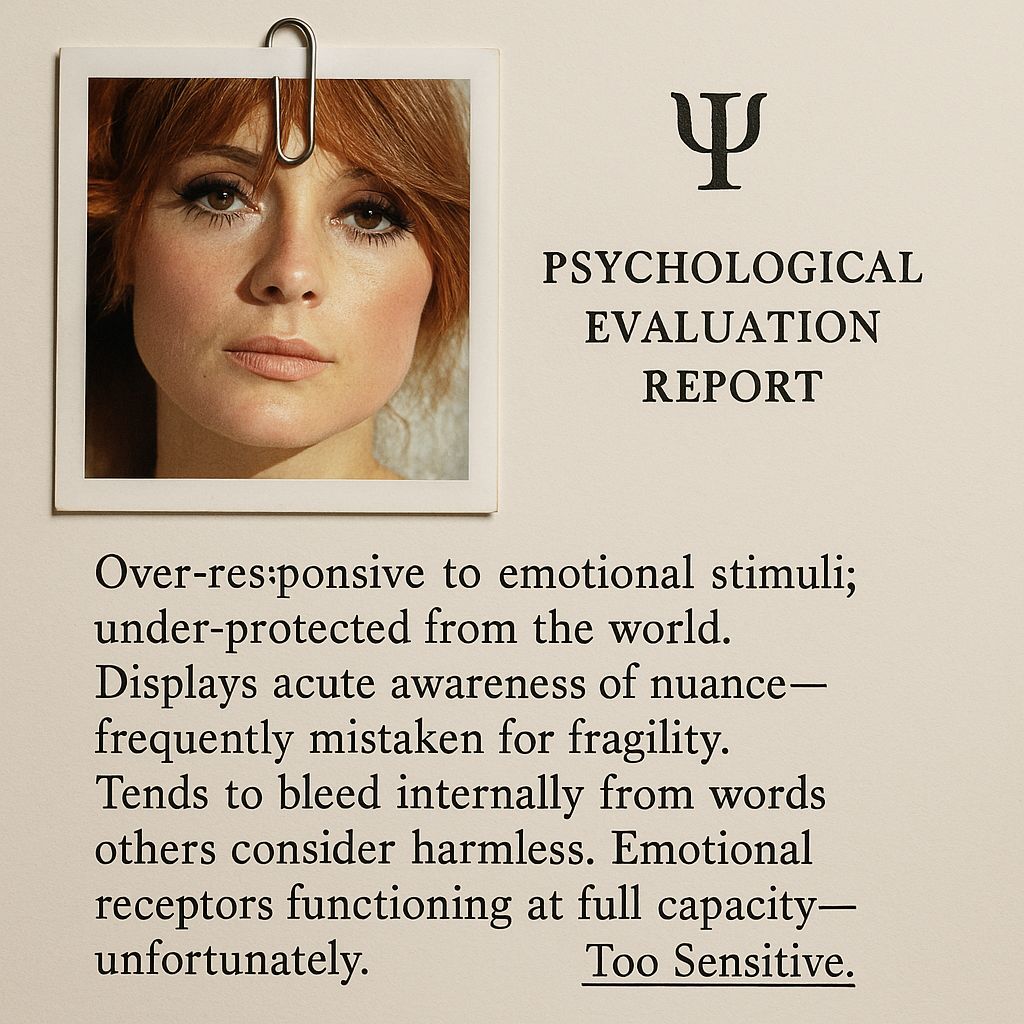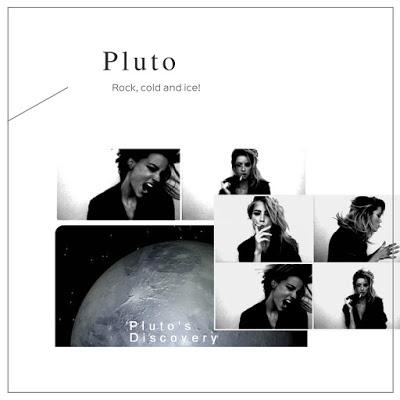
Stir of Echoes: Neptune Is up to Some Ghostly Shenanigans!
 Stir of Echoes is a fine cinematic jaunt into the liminal space where skepticism meets the spectral! This film is practically soaked in Neptunian mysticism, dripping with psychic revelation, and an eerie sense of fate calling from the beyond. Tom Witzky, played by Kevin Bacon, starts as a man firmly grounded in Saturnian realism—hard work, proven results, logic over intuition. But when hypnosis opens his subconscious, he’s plunged headfirst into the abyss of Neptune’s domain. Neptune is the planet of dreams, illusions, and spiritual transcendence. It dissolves boundaries—between reality and fantasy, the living and the dead, the known and the unknowable. Tom, once a man of wires and connections in the physical world, is forcibly re-wired by his newfound psychic sensitivity. His journey mirrors what happens when Neptune transits a personal planet in someone’s birth chart—confusion, dissolution of old certainties, and ultimately, an awakening to deeper truths.
Stir of Echoes is a fine cinematic jaunt into the liminal space where skepticism meets the spectral! This film is practically soaked in Neptunian mysticism, dripping with psychic revelation, and an eerie sense of fate calling from the beyond. Tom Witzky, played by Kevin Bacon, starts as a man firmly grounded in Saturnian realism—hard work, proven results, logic over intuition. But when hypnosis opens his subconscious, he’s plunged headfirst into the abyss of Neptune’s domain. Neptune is the planet of dreams, illusions, and spiritual transcendence. It dissolves boundaries—between reality and fantasy, the living and the dead, the known and the unknowable. Tom, once a man of wires and connections in the physical world, is forcibly re-wired by his newfound psychic sensitivity. His journey mirrors what happens when Neptune transits a personal planet in someone’s birth chart—confusion, dissolution of old certainties, and ultimately, an awakening to deeper truths.
The hypnosis scene is essentially a Neptune initiation. His sister-in-law, knowingly or not, plays the role of a psychic conduit, shattering his rigid perception of reality and opening the floodgates of clairvoyance. Once Neptune takes hold, there’s no turning back—he is haunted, quite literally, by visions that demand resolution. The film deftly explores Neptunian energy: on one hand, it brings spiritual insight; on the other, it can be overwhelming, intoxicating, and even terrifying when one is unprepared.
Tom’s journey is a microcosm of what many experience when Neptune becomes active in their charts—uncertainty, but also a deeper connection to the unseen forces that shape our lives. It shows us that reality is not as solid as we think, yet in revealing this truth, it also leaves us vulnerable, lost in the currents of the unknown. Tom issues the challenge to be hypnotized, it marks the beginning of his journey into the enigmatic world of Neptune. During the hypnotic session, his sister-in-law plants a post-hypnotic suggestion, encouraging Tom to become more “open-minded.” This suggestion unwittingly unlocks the floodgates to his latent psychic abilities, which, in astrological terms, can be seen as a manifestation of the Neptunian influence. As Neptune dissolves boundaries and encourages the exploration of the unknown, Tom’s newfound psychic powers are unleashed in full force.
Hypnosis is a Neptunian gateway—like slipping through the veil that separates the conscious from the unconscious, the mundane from the mystical. Neptune is the great dissolver, opening the doors to realms we scarcely acknowledge. Tom, in his brash skepticism, practically dares the universe to prove him wrong. And Neptune, never one to pass up a good irony, responds by submerging him into its boundless waters. It is the kind of well-intentioned yet reckless invocation that inadvertently invites the Neptunian flood. Much like an unguarded moment during a Neptune transit, where what begins as a gentle exploration of expanded awareness quickly spirals into a full-blown dissolution of the self. In Tom’s case, his rigid, Saturnian walls collapse, and his psyche becomes receptive to ghostly transmissions. His experience is eerily akin to what happens when someone undergoes a spiritual awakening without the scaffolding to support it—he’s overwhelmed, disoriented, unsure whether he’s gifted or cursed. This is Neptune in its most potent form: the ambiguity of power, the ecstatic agony of knowing too much yet understanding too little.
The crux of the film revolves around Tom’s haunting experiences, where he is visited by the spirit of a young woman. The ghostly young woman in Stir of Echoes is the very embodiment of Neptune’s otherworldly touch—a presence caught in the space between worlds, longing for connection, for resolution, for justice. She is both victim and messenger, a tragic figure wrapped in the misty shroud of Neptunian themes: innocence betrayed, boundaries dissolved, reality blurred.
Neptune governs the realm of the unseen—the dreams that bleed into waking life, the truths that refuse to stay buried. In this way, the spirit’s persistent attempts to reach Tom are classic Neptunian phenomena: visions, intuitive flashes, a dissolving of the veil that separates the conscious mind from the deep ocean of the collective unconscious. And what does she seek? Not vengeance, but understanding. Not retribution, but release.
Her innocence and vulnerability are vital here. Neptune, for all its mystical interpretations, often speaks through the wounded, the lost, the forgotten. It rules over those who slip through the cracks of reality—dreamers, artists, visionaries, but also victims, martyrs, and those who have been silenced. The young woman’s tragic fate is a symbol of Neptune’s shadow: the danger of being too trusting, too open, too unguarded in a world that does not always honor such purity.
Neptune’s presence in the birth chart is a hidden portal, communicating through dreams, intuition, and strange moments of déjà vu where time seems to fold in on itself. It blurs the line between what is real and what is imagined, what is personal and what is drawn from the vast, swirling ocean of the unconscious. Once Neptune’s door is opened, it does not politely close again. This mirrors the way Neptune operates in a birth chart. Its influence is often subtle, working beneath the surface, shaping perception in ways we don’t always recognize.
Those with strong Neptunian placements—Neptune in the first house, conjunct the Sun or Moon, or prominently placed—often experience life through a dreamlike filter, attuned to unseen energies, porous to emotions that may not even be their own. They may be visionaries, artists, psychics—or, when overwhelmed, they may struggle with escapism, addiction, or a sense of losing themselves in the vastness of it all.
If we were to place Neptune in Tom’s hypothetical birth chart, where do you think it would be? Perhaps in his 12th house, the realm of the hidden and the mystical? Or in his 8th, the house of the occult, death, and transformation? Wherever it lies, its grip on him is undeniable.
Hypnosis
Hypnosis is a Neptunian initiation—a temporary dissolution of the ego’s rigid barriers, allowing the subconscious to take the wheel. It’s the ultimate Neptune experience: drifting into a space where time, identity, and reality itself become fluid. Under hypnosis, Tom doesn’t only unlock a memory or a repressed emotion—he unlocks an entire hidden dimension of existence.
According to Liz Greene, a strongly placed Neptune—especially in hard aspect to the Sun or Moon—creates an individual whose sense of self is inherently porous. These people sense the emotions of others, absorb them. They live in the borderlands between waking life and the imaginal realm. It’s a beautiful but precarious state, where one must be careful not to become lost in it all.
Tom, prior to his hypnosis, seems to have a rather grounded, no-nonsense demeanor—a man of the material world. But Neptune’s energies were likely lying dormant within him, waiting for the right trigger. Once the hypnosis peels back the layers of his rational mind, his Neptunian sensitivity floods in. And that’s the thing about Neptune: when it’s activated, it drowns you in revelations.
This brings us to an interesting question: was Tom always meant to have this experience? Was Neptune always lurking in his chart, waiting for the right moment to awaken? Perhaps his journey was less about gaining psychic awareness and more about remembering something he had unconsciously suppressed. In true Neptunian fashion, the lines between destiny, coincidence, and past-life echoes become blurred. Either way, once Neptune’s door is opened, there’s no locking it again.
The Neptunian soul is both an antenna and a sponge—receptive to the the unseen, yet vulnerable to the distortions of illusion. It’s a paradoxical existence, where the gift of heightened perception must be tempered with the discipline of discernment. Without balance, the Neptunian individual can become lost in a sea of fantasy, delusion, or even psychic overload. Stir of Echoes is a masterclass in this very struggle. Tom begins as a staunch realist, a man whose world is built on facts and physical labor. But Neptune does not care for brick and mortar—it seeps through walls, dissolves certainty, and insists on the reality of the unseen.
His transformation is an existential reckoning. He must reconcile the rigid framework of his former beliefs with the boundless, often terrifying truths of his newfound awareness. And this is Neptune’s lesson for all who fall under its spell: how do you enter into the mystical realm without losing yourself in it? How do you open the doors of perception without becoming consumed by what lies beyond?
The term Hypnosis (from Hypnos, the Greek god of sleep) was coined by the Scottish physician James Braid during the 1840s, coincident with the actual discovery of the planet Neptune. The discovery of this gateway into the unconscious, which had such profound ramifications for psychology, psychiatry, medicine, and spiritualism in the centuries which followed, is a fascinating one. It is useful to examine certain aspects of the phenomena of hypnosis. Sometimes it seems that the Neptune-dominated personality walks about in a state of perpetual semi-hypnosis, terrifyingly suggestible to just about anything passing by. Hypnotists generally agree that certain types of people are extremely difficult to hypnotise. The psychotic, the drunk, and the drug addict may pose insurmountable problems because hypnotic trance requires a relinquishing of ego control to the hypnotists, and in the three conditions mentioned above, there is no ego left to give away. In contrast the hyper rational temperament is equally difficult to hypnotise, although this is due largely to extreme defensiveness rather than lack of suggestibility. The Astrological Neptune and the Quest for Redemption
Under hypnosis, individuals tend to become more receptive to suggestions made by the hypnotist. This heightened suggestibility is a central feature of the hypnotic state. Hypnotists can guide subjects to experience specific thoughts, emotions, or sensations, and the subject is more likely to accept these suggestions as real during the hypnotic trance. Hypnosis has been effectively utilized for pain management. While it may not completely eliminate pain, it can significantly reduce the perception of pain and discomfort. This is often used as a complementary approach in healthcare settings to alleviate pain in patients during procedures like injections, dental work, and surgeries. The hypnotic state can create a kind of mental anesthesia, helping individuals tolerate pain more effectively.
Hypnotherapy is a valuable tool in addressing phobias and anxiety disorders. By guiding individuals into a state of deep relaxation and heightened suggestibility, a skilled hypnotherapist can help patients confront and reframe the fears associated with their phobias. This can lead to long-lasting reductions in phobic responses. Hypnosis can also be employed to assist with behavior modification. Subjects can be guided to adopt new habits, overcome addictions, or change undesirable behaviors by addressing the subconscious motivations and triggers behind those actions.
Hypnosis has shown promise in addressing psychosomatic conditions, where physical symptoms are linked to underlying psychological or emotional issues. By accessing the subconscious mind, hypnotherapy can help individuals better understand and manage these conditions. In some cases, hypnosis can be used to manipulate pain perception. By suggesting that a subject is experiencing pain or discomfort, the hypnotist can induce physical responses like increased heart rate, sweating, or muscle tension. This aspect is sometimes used in research or therapeutic settings to explore the mind-body connection and better understand how pain perception works.
It’s important to note that not everyone is equally susceptible to hypnosis, and the effectiveness of hypnotherapy can vary from person to person. Additionally, hypnosis should only be performed by trained and ethical practitioners who prioritize the well-being and consent of the subject.
The suggestibility is unconscious and may be called out in other life situations. The depth of the hypnotic trance is measured by certain characteristic response. The “hypnoidal” state refers to a feeling of relaxation and drowsiness, perhaps with some fluttering of the eyelids. A light hypnotic trance is reflected by partial catalepsy – in other words, the subject can be instructed to experience unusual rigidity in various groups of muscles such as eyelids and limbs, accompanied by slow, deep breathing and a feeling of detachment or floating. At this point the state of “rapport” between hypnosis and subject comes strongly into play. In the medium trance, partial amnesia and anesthesia can be induced by the hypnotist; tactile illusions such as itching, burring, or a particular taste or smell will be accepted by the subject as real. In the deep trance, which Charcot believed to be concomitant to the hysterical personality, the subject can open his or her eyes, although the pupils will be dilated and staring, and hyperacute perceptions can be achieved. Sometimes clairvoyant or telepathic phenomena occur. Complete amnesia and anesthesia can also be induced, and quite bizarre posthypnotic suggestions will be obediently followed. Even more extraordinary, the subject can be instructed to gain control of the organic bodily functions such as heartbeat, blood pressure and digestion. Blisters can be raised on the skin, and apparently intractable physical symptoms such as lifelong psoriasis can be alleviated – implying that such symptoms are hysterical in the first place. Lost memories from every stage of life can be hauled out form the watery depths, hallucinations occur by suggestion, and all spontaneous activity is inhibited to the absolute control of the hypnosis.
The film “Stir of Echoes” is a fascinating exploration of the Neptunian realm, making it an intriguing addition to any astrologically-inclined viewer’s watchlist. Its thematic elements of suggestibility, emotional depth, and paranormal encounters resonate strongly with the qualities often associated with Neptune in astrology.
In the movie, the hypnotist woman claims that Einstein is a Gemini, but he was actually a Pisces.
It’s A classic case of Hollywood playing fast and loose with the details, as they so often do. I suppose they thought, “Gemini! Quick-witted, intelligent, the archetypal genius!” But in doing so, they overlooked the profoundly Neptunian nature of Einstein’s mind—the dreamer, the mystic, the visionary who could intuitively feel the curvature of space-time before he could even mathematically prove it. Pisces energy makes perfect sense for Einstein. His ability to imagine realities beyond conventional perception, his near-mystical insights into the fabric of the universe—it’s all very Neptune. He wasn’t only an intellectual; he was an intuitive genius. His work was about seeing through the illusion of separation, recognizing the interconnected, fluid nature of existence. That’s Pisces through and through—merging boundaries, dissolving limitations, and perceiving what lies beyond. Stir of Echoes making the slip-up—what a shame! For those of us who revel in the esoteric details, such things can be maddening. But no film is perfect. And perhaps there’s something very Neptunian about that, too—the way cinema itself is an illusion, a dream projected onto a screen, inviting us to suspend disbelief and step into another reality, even when it occasionally stumbles on the facts. Still, I do wish they’d consulted an astrologer before dropping Einstein into the Gemini bucket. Would have made the immersion that much sweeter, don’t you think? It’s essential to clarify that Albert Einstein was a Pisces, born on March 14, 1879. His astrological sign was not Gemini, as suggested in the film.







 Material Mysteries: Pluto in the 2nd House, According to Astrological Research
Material Mysteries: Pluto in the 2nd House, According to Astrological Research
 Signs You’re a Plutonian (Part 2)
Signs You’re a Plutonian (Part 2)
 Moon Trine Mars Natal Aspect
Moon Trine Mars Natal Aspect
 Pisces Fish Symbol Meaning
Pisces Fish Symbol Meaning
 Uranus Transits the 4th House: The Chaotic Path to Personal Inner Growth
Uranus Transits the 4th House: The Chaotic Path to Personal Inner Growth
 Taurus: Psychology
Taurus: Psychology
 Sun Square Pluto Natal Aspect: I Am Titanium
Sun Square Pluto Natal Aspect: I Am Titanium
 Sun Conjunct Pluto Synastry: Enlightening or Annihilating
Sun Conjunct Pluto Synastry: Enlightening or Annihilating
 Venus Trine Saturn Synastry
Venus Trine Saturn Synastry
 Moonlight Psychology
Moonlight Psychology
 Sun Square Pluto Synastry: You’ve Got That Power Over Me
Sun Square Pluto Synastry: You’ve Got That Power Over Me
 Pluto’s Discovery and Astronomical Features
Pluto’s Discovery and Astronomical Features
 Jungian and Freudian Astrology: Part 1
Jungian and Freudian Astrology: Part 1
 Mars-Pluto Synastry: Something Quite Dark and Dangerous
Mars-Pluto Synastry: Something Quite Dark and Dangerous
 Pluto: 13 Dark Truths
Pluto: 13 Dark Truths
 The Differences Between Synastry and Composite Charts!
The Differences Between Synastry and Composite Charts!
 Mars Conjunct Pluto Synastry
Mars Conjunct Pluto Synastry
 By Jove!
By Jove!
 Saturn Conjunct Pluto Natal Aspect
Saturn Conjunct Pluto Natal Aspect
 Neptune in the 1st House
Neptune in the 1st House